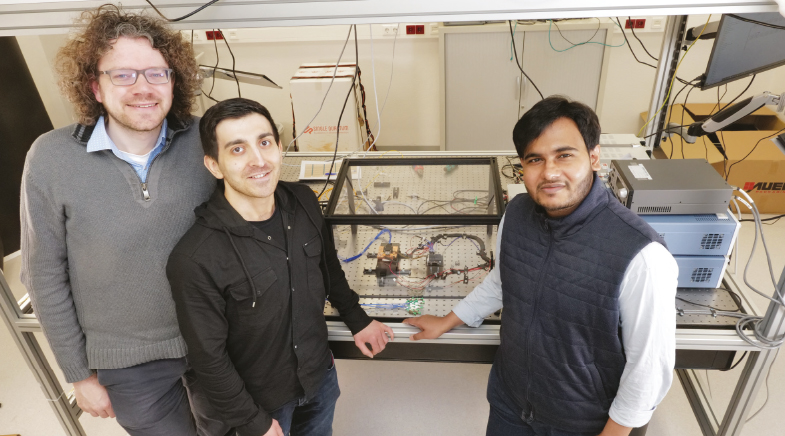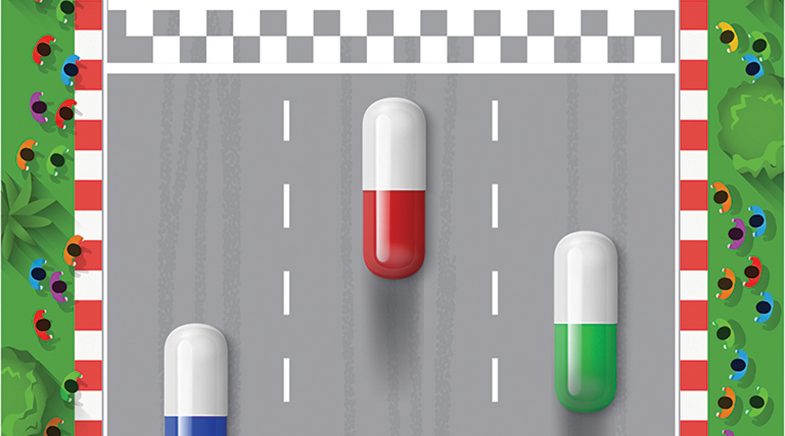Gone with the War
-
- from Shaastra :: vol 03 issue 08 :: Sep 2024

Henry Moseley blazed a brilliant scientific trail; a sniper bullet ended his too-short life.
In August 1915, allied forces were desperately trying to wrest control of the Sari Bair highlands in Gallipoli (now in Türkiye) from Ottoman troops. A British contingent had just reached the hill of Chunuk Bair. On August 10, Ottoman soldiers suddenly attacked the contingent, slaughtering most of them. Among the dead was Henry Moseley, a 27-year-old signals officer who had been on track to win a Nobel Prize.
Born in England into a family of achievers, Moseley showed a keen interest in science. After pursuing a bachelor's degree from Trinity College, he reached out to nuclear physicist Ernest Rutherford, who accepted him into his lab at The University of Manchester. Moseley was asked to work on radioactivity and teach students, neither of which he enjoyed. X-rays were his primary interest, which only grew after he was trained in spectroscopy techniques by physicist William Henry Bragg. Despite Rutherford's disapproval, Moseley and his friend Charles G. Darwin (naturalist Darwin's grandson) worked together to design a vacuum tube and carry out X-ray diffraction experiments.

In 1913, Moseley abruptly left Manchester for the University of Oxford to stay close to his mother. He had no funding or job, but a colleague offered him lab space to continue his experiments. Around this time, amateur physicist Antonius van den Broek made a bold claim that elements should not be arranged by atomic weight on the Periodic Table, but instead by atomic number, the number of positive charges in the nucleus. Moseley decided to test this theory. He designed a vacuum tube with a cathode to generate electrons, and an anode made of the target element, which was mounted on a trolley that could rapidly roll over to the next target. When electrons struck the anode, it emitted X-rays that were then deflected by a crystal, creating spectral lines on a photographic plate. From the angle of deflection, Moseley calculated the frequencies of the emitted X-rays.
Surprisingly, when he stacked each element in order of increasing atomic number, the frequencies increased in the same order, like a staircase; this later became Moseley's law. He realised that the spectra could also serve as the element's "fingerprint", leading to the discovery of new elements. His work led to the restructuring of the Periodic Table, making it more complete.
LEARNED LINEAGE

Henry Moseley's paternal grandfather was a mathematician with an interest in mechanics. His maternal grandfather was a famous Welsh lawyer-turned-biologist. His father, a Professor at the University of Oxford, had been on board the HMS Challenger, which carried out the first global marine research expedition. His mother won the British Ladies Chess championship in 1913. No wonder science came naturally to the young Moseley.
When the First World War broke out, Moseley was in Australia attending a scientific meeting. Against the advice of friends and family, he rushed back to enlist. After being trained in communications, he joined the 38th Brigade and set off for Gallipoli. On that fateful day, he was apparently shot in the head by a sniper; he was later buried there among hundreds of other dead soldiers.
THE CHANGEMAKER

Although Ernest Rutherford was already a Nobel Laureate by the time he proposed his model of the atom, scientists didn't accept it immediately. It was Moseley's experiments with X-ray spectra that reinforced the idea that atoms have a positively charged nucleus surrounded by negatively charged electrons. "...actually the Rutherford work was not taken seriously," Niels Bohr once said (bit.ly/moseley-bohr). "There was no mention of it in any place. The great change came from Moseley."
Scientists across Europe were shocked by his untimely death. Had he lived, he might have won the Nobel Prize for which he had been nominated. The British government subsequently decided not to send scientists into active combat. But the change came too late for Moseley, whose death, as scientist and science fiction legend Isaac Asimov put it, "might well have been the most costly single death... to mankind" as a result of the War.
Ranjini Raghunath is a Bengaluru-based science writer and editor.
Have a
story idea?
Tell us.
Do you have a recent research paper or an idea for a science/technology-themed article that you'd like to tell us about?
GET IN TOUCH














